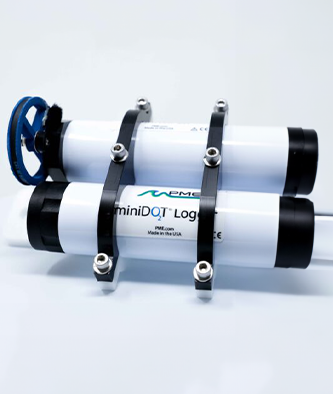Water quality parameters including chemical, physical and biological properties can be monitored based on the desired water parameters important to each research initiative. Parameters that are frequently sampled or monitored for water quality include: dissolved oxygen (DO), temperature, turbidity, photosynthetically active radiation (PAR), chlorophyll, blue-green algae, rhodamine dye, fluorescein dye, CDOM/FDOM, refined fuels/crude oil, tryptophan, pressure, optical brighteners and phycoerythrin.
Photosynthetically Active Radiation (PAR)
What is Photosynthetically Active Radiation (PAR)?
Photosynthetically Active Radiation, more commonly known as PAR, refers to the range of light wavelengths that plants require to conduct photosynthesis. Wavelengths between 400 – 700 nm (nanometers) are ideal for plant growth.
Fluorescein Dye
What is Fluorescein?
The organic dye known as fluorescein is popular for use in water tracing studies. Reddish-orange in powdered form, fluorescein becomes a bright yellowish-green when introduced to water. While fluorescein offers researchers insights into water flow in unobservable settings such as groundwater or submerged tunnels, sensitivity to pH and photo-bleaching limits its use in select settings.
Rhodamine WT Dye
What is Rhodamine?
Rhodamine is a fluorescent dye stemming from the same reactive dye family as fluorescein and is also commonly used in water tracing studies. However, fluorescein is sensitive to pH and can photo-bleach in certain conditions, limiting its use. Conversely, rhodamine is a stable alternative so can be used in more water tracing situations.
Turbidity
What is Turbidity in Water?
Turbidity, also known as the clarity of water, changes depending on the number of suspended particles present in a body of water. Turbidity, an optical characteristic of water, is a measurement of the amount of light that is scattered by material in the water when a light is shone through the water sample
CDOM/FDOM
What are Colored & Fluorescent Dissolved Organic Material (CDOM/ FDOM)?
While dissolved organic matter (DOM) has been described as ubiquitous throughout aquatic ecosystems, not all DOM are identical. Generally speaking, DOM concentrations are a common point of interest for researchers because the presence (or absence) of nutrients in water can shape or determine the outcome of a water body’s essential biological and chemical processes.
Phycocyanin Optics
(Blue-Green Algae - Freshwater)
What is Blue-Green Algae?
Cyanobacteria is commonly known as blue-green algae although it is not algae, but rather photosynthetic bacteria. Cyanobacteria can be found floating atop bodies of water such as ponds, lakes, water reservoirs and sometimes in brackish and salt water. As their name would suggest, blue-green algae are often distinguished by their blue-green color, although they can sometimes appear more green or even brown.
Tryptophan
What is Tryptophan in Water?
Cyanobacteria is commonly known as blue-green algae although it is not algae, but rather photosynthetic bacteria. Cyanobacteria can be found floating atop bodies of water such as ponds, lakes, water reservoirs and sometimes in brackish and salt water. As their name would suggest, blue-green algae are often distinguished by their blue-green color, although they can sometimes appear more green or even brown.
Optical Brighteners
What are Optical Brighteners?
Whether it’s toilet paper, detergent, stain remover or old-fashioned bleach, plenty of laundry products promise customers whiter and brighter results in the wash. The transformation may seem miraculous, but it’s all thanks to the magic of chemistry. Optical brightening agents (OBAs) are excited by near-UV light and emit a visible blue light to counteract the appearance of stains or yellowing in fabrics.
Phycoerythrin
What is Phycoerythrin?
Phycoerythrin is a light absorbing protein found in both Rhodophyta and cyanobacteria; or red and blue-green algae, respectively. Phycoerythrin is similar to phycocyanin - the protein responsible for creating a blue-green pigment in cyanobacterial algal blooms. Conversely, phycoerythrin is distinguished by its red hue and is characteristic of Rhodophyta blooms.






























